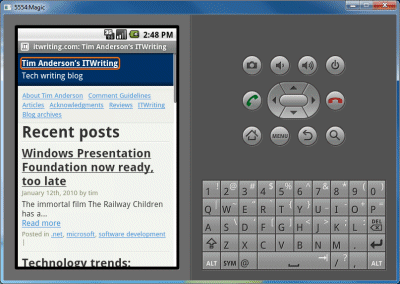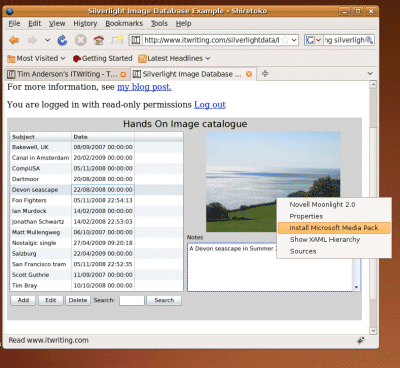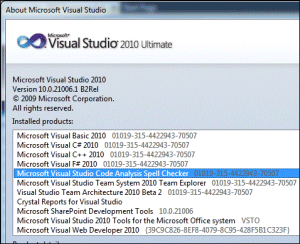I listened to Adobe’s investor conference call yesterday following the release of its fourth quarter results, to the end of November 2009.
The results themselves were mixed at best: revenue was down in all segments year on year and there was a $32 million GAAP net loss, but Adobe reported an “up-tick” towards the end of the quarter and says that it expects a strong 2010, presuming a successful launch for Creative Suite 5.
Adobe’s situation is interesting, in that while it is doing well in strengthening the Flash Platform for media and to a lesser extent for applications, that success is not reflected in its results.
The reason is that it depends largely on sales of design software (mainly Creative Suite) for its revenue. According to its datasheet [PDF], this was how its revenue broke down for the financial years 2006 to 2009:
| |
2006 |
2007 |
2008 |
2009 |
| Creative |
56% |
60% |
58% |
58% |
| Business Productivity |
32% |
29% |
30% |
29% |
| Omniture (analytics) |
– |
– |
– |
1% |
| Platform |
4% |
4% |
6% |
6% |
| Print and publishing |
8% |
6% |
6% |
6% |
“Creative” is Creative Suite and its individual products, plus things like Audition and Scene 7.
“Business productivity” encompasses Acrobat (including Acrobat.com), LiveCycle servers, and Connect Pro web conferencing.
“Platform” is developer tools and Flash Platform Services, though not LiveCycle Data Services.
“Print and Publishing” is PostScript, Director, Captivate, and old stuff like PageMaker and FrameMaker but not InDesign.
Some of this segmentation seems illogical to me and probably to Adobe as well; there are no doubt historical reasons.
If the economy recovers and Creative Suite 5 delivers a strong upgrade, Adobe may well have the good 2010 that it is hoping for. One of the things mentioned by CEO Shantanu Narayen was that an aging installed base of PCs more than five years old was holding back its sales; no doubt most of those PCs are running Windows XP and it caused me to wonder how much the general disappointment with Vista has affected other companies such as Adobe which benefit when PCs are upgraded, and how much the good reception for Windows 7 may now help it.
Still, there is aspect of the above figures that rings alarm bells for me. They show no evidence that Adobe is able to migrate its business from one dependent on packaged software sales to one that is service-based. That is important, because I suspect that the packaged software model is in permanent decline.
The pattern which I’ve seen now for many years as a software reviewer is that a vendor brings out version x of its product and explains why it is a must-have upgrade from version x-1, which (it turns out) has a number of deficiencies that are only now being addressed.
A year or two later, there’s another upgrade, another briefing, and lo! it is version x+1 that you really need; version x was not that good after all.
It is a difficult act for vendors to sustain, and hated by users too. Even when users have signed up for some sort of service contract that gets them new releases for free, many are reluctant to upgrade because of the pain factor; if the old edition is performing well, they see no need to switch.
The next-generation software world replaces this model with Internet applications where upgrade is seamless and at no extra cost. You pay for the service, either with money (Salesforce.com) or mainly with advertising (Google Apps).
Adobe is there, of course, with Acrobat.com for productivity applications, and also tools for building them with Flash, Flex and AIR. But it is one thing to be there, and another thing for those investments to be delivering an increasing proportion of overall revenue; and the table above suggests that progress is slow.
It will be fascinating to see how this unfolds over the coming decade.





